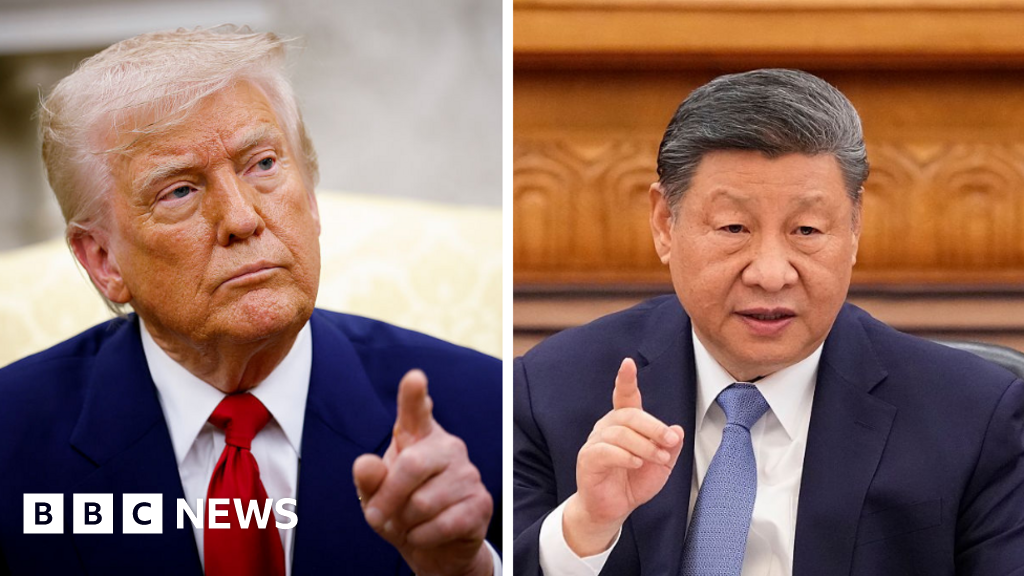Andy Jassy, CEO of Amazon, speaks during an unveiling event in New York on Feb. 26, 2025.
Michael Nagle | Bloomberg | Getty Images
Amazon reported better-than-expected results for the first quarter, but it gave soft guidance for the current period as the company navigates uncertainty around President Donald Trump's sweeping tariffs.
The stock fell more than 2% in extended trading.
Here's how the company did, compared with estimates from analysts polled by LSEG:
- Earnings per share: $1.59 vs. $1.36 expected
- Revenue: $155.67 billion vs. $155.04 billion expected
Wall Street is also looking at other key revenue numbers:
- Amazon Web Services: $29.3 billion vs. $29.42 billion expected, according to StreetAccount
- Advertising: $13.92 billion vs. $13.74 billion expected, according to StreetAccount
Amazon said it expects second-quarter operating income to be between $13 billion and $17.5 billion, below the $17.64 billion consensus forecast, according to StreetAccount.
The company expects sales this quarter to be between $159 billion and $164 billion, representing growth of 7% to 11%. Analysts were expecting $160.9 billion, according to LSEG.
Amazon noted "tariffs and trade policies" and "recessionary fears" are among a range of factors that could make its guidance subject to change. The company did not refer to tariffs in its forward-looking guidance last quarter.
The topic of tariffs is a major focus among investors this quarter. Amazon faces significant exposure to Trump's tariffs, primarily through its retail unit. Amazon sources some products from China, which was hit with an aggressive 145% levy.
Many sellers on Amazon's third-party marketplace, which accounts for more than half the company's total sales, rely on the world's second-largest economy to make or assemble their products. Some sellers have already raised prices and cut back on advertising spend as they confront higher import costs.
The company landed in the crosshairs of the White House earlier this week over a report that Amazon planned to show shoppers the cost of the tariffs. Amazon said no such change was coming, and that it only considered adding a line item to products sold via its discount storefront, called Haul.
On a call with investors, Jassy said the "diversity" of Amazon's third-party seller base means that some merchants aren't "going to pass all or any of those tariffs on to customers."
He went on to say that Amazon could emerge from the uncertain tariff environment stronger than before, given its ability offer low prices. Jassy pointed to the Covid pandemic as a period when shoppers flocked to the site and the company grew its market share.
Jassy acknowledged that Trump's on-again-off-again tariffs have made it hard to predict what impact they'll have on Amazon's businesses.
"It's hard to tell what's going to happen with tariffs right now," he told investors. "It's hard to tell where they're going to settle and when they're going to settle."
Net income came in at $17.13 billion, or $1.59 per share, compared with $10.43 billion, or 98 cents per share, a year ago. Jassy has worked to bolster Amazon's profits in recent years by cutting expenses and making its logistics network operate more efficiently.
Sales in Amazon's cloud division came in just below consensus estimates, marking the third consecutive quarter of revenue misses. AWS revenue grew 17% during the quarter, which was a slower rate than analysts expected. Last quarter, sales in the unit expanded 18.9%.
Advertising was a bright spot in the report. Sales in the unit rose 19% year over year to $13.92 billion during the quarter, outpacing growth in Amazon's core retail business.
Other online ad companies including Google and Snap have warned of the potential for businesses to tighten their marketing budgets as a result of the tariffs.
Amazon year to date stock performance













 English (US) ·
English (US) ·